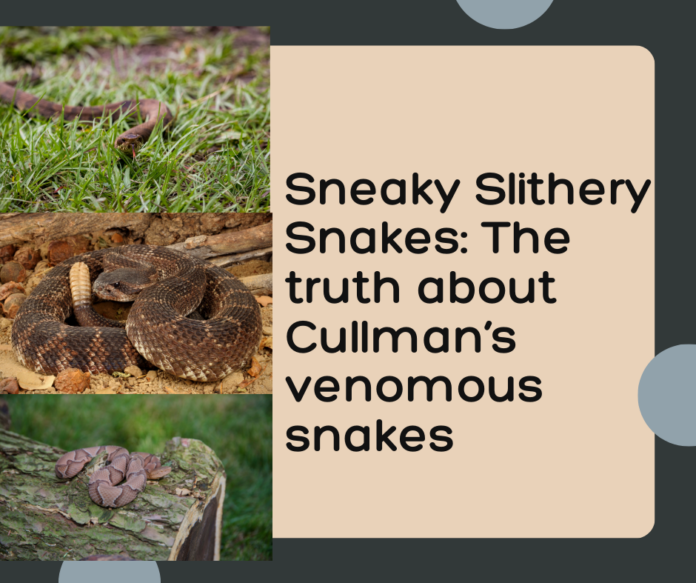CULLMAN, Ala. – Spring is almost here, and that means that soon enough, the snakes inhabiting north Alabama will make their way back out into civilization from their weather-induced slowdown. Cullman is home to many snake species that hide in a variety of spots. Not all snakes are venomous; in fact, some snakes give positive attributes to their environment, such as insect and pest control. A few snake species will even prey on their venomous counterparts! Like them or not, snakes are an important part of Alabama’s ecosystems and a piece of Alabama’s beautiful, diverse wildlife puzzle.
The most common non-venomous snakes found in north Alabama are gray and eastern rat snakes, Dekay’s brownsnake and water snakes; North Alabama’s venomous friends are the copperhead, timber rattlesnake and the occasional cottonmouth.
“Perception is everything. The fear of snakes is common, but knowledge is power,” said Quail Forever Farm Bill Biologist Jessie Taylor. “There are 66 snake species native to Alabama. Out of those, only six are venomous. To break it down even further, in north Alabama, we are out of range of three of those. If you’re a numbers person, your chance of encountering a venomous snake is only about 4.5%.”
Alabama’s cottonmouths find shelter near creeks, ponds and lakes. Copperheads often lie in brush or fallen leaves, using their incredible natural camouflage to hide from predators; however, a non-venomous native, the black king snake, will prey on and eat copperheads. The elusive timber rattler, Cullman’s last potential venomous snake, prefers to be, you guessed it, around wooded areas such as forests, farms and brush piles.
Some may feel comfortable taking those chances, but for individuals still uneasy with the thought of snake sightings, Taylor gave tips on finding and spotting venomous snakes to tell them apart from their friendlier counterparts. He said a common myth is that all venomous snakes have triangle-shaped heads; however, that isn’t always the case.
“A triangle-shaped head does not equal a venomous snake! There are many nonvenomous species, including the very common gray rat snake, that have a triangle-shaped head. If you look at the profile of the snake (from the side, not the top), tornados are good and Hershey kisses are bad,” shared Taylor. “All of the venomous snakes have incredible camouflage and, in general, venomous snakes will have patterns that look like hourglasses or bowties. Nonvenomous snakes tend to have saddles instead.”
While finding a snake in a home or yard area can be alarming, chances are, the snake is afraid of potential danger and has no interest in pursuing a human for a snack. If a snake is found and its venomous or non-venomous nature isn’t apparent, it’s best to call a professional to remove the animal from the premises.
Copyright 2024 Humble Roots, LLC. All Rights Reserved.



















